Price:₹6,000.00
Sar Pass Trek 2025: Complete Guide, Itinerary, Route, Map & Best Season, Best Summer Trek in Himachal
Sar Pass Trek is one of the most beautiful and adventurous treks in Himachal Pradesh’s Parvati Valley, blending moderate adventure with soul-stirring landscapes. Some journeys test your limits, and then some quietly reshape your spirit. The Sar Pass Trek lies deep in Himachal Pradesh’s Parvati Valley. It doesn’t scream for attention; it whispers in snow-laced trails, echoes through pine-scented forests, and lingers in the hush of a high-altitude morning.
The Sar Pass trek begins for Kasol, Kullu Valley which takes you through timeless Himalayan villages like Grahan, where life moves to the rhythm of wind and woodsmoke. The Sar Pass is not about reaching the highest point, it’s about the journey you make with your fellow trekker and nature that brings you closer to your better self. The trail is adorned with numerous scenic moments, whether it’s panoramic scenes of mountains or lavish grasslands. Every step here reveals a new side of Himalayan beauty.
Plus, the silence between footfalls and the shock of cold mountain air in your lungs. The frozen lake, “Sar,” reflecting the sky like a forgotten mirror.
Every step draws you deeper into a landscape that feels untouched by time and closer to parts of yourself that modern life tends to silence. Sar Pass isn’t just a trek. It’s a conversation with nature, and maybe, just maybe, with the version of yourself you’ve been too busy to meet.
Day-by-Day Short Itinerary for Sar Pass Trek
DAY 1 – Report at Kasol Base camp before 9:30 AM. – All Group meet together- and Himalayan
Hikers team take 01 Hours for Briefing for the Sar Pass Trek | Same Day Start Trek from Kasol to Grahan village| Distance: 07 km | Trek Time: 5/6 hours | Altitude 7,709 ft | Overnight Stay at Home Grahan
DAY 2- Trek from Grahan village to Min Thach Camp
Distance: 07.5 km | Trek Time: 6/7 hours | Altitude 11,154 ft | Overnight Stay Camp at–Twin/ Three Sharing
DAY 3- Trek from Min Thach Camp to Nagaru Base of Sar Pass
Distance: 05 km | Trek Time: 5/6 hours | Altitude 12,400 ft | Overnight Stay Camp at–Twin/ Three Sharing
DAY 4- Trek from Nagaru Base to Biskeri Thach via SAR Pass Summit
Altitude 13,600 ft | Distance: 12 km | Trek Time: 7/8 hours | Cross to Sar Pass to Biskeri Camp Altitude 11,100 ft | Overnight Stay Camp at–Twin/ Three Sharing
DAY 5- Trek from Biskeri Thach to Pulga Road
Distance: 06 km | | Trek Time: 4/5 hours | Same Day Drive to Kasol Market -Distance: 15 km | Trek Time: 1 hours
Himalayan Hikers Drop Kasol around 1 to 2 PM END OUR SERVICE HERE
Why choose Himalayan Hikers for Sar Pass
We’re here to give you the greatest experience possible through the eyes of highly skilled and qualified specialists who have a passion for adventure sports. We are community members attempting to promote trekking and other adventure activities while supporting local businesses. At Himalayan Hikers, we dedicate ourselves to providing you with an unforgettable experience.
Cultural and Historical Significance of Sar Pass Trek
Sar Pass has been deeply rooted in the Himachali cultures. The word ‘Sar’ means ‘Lake’ and ‘Pass’ is an English word which means a route that connects at least two locations. The Sar Pass lies in the Parvati Valley of Himachal Pradesh, and the starting point for the Sar Pass trek is Kasol.
Historical Importance of Sar Pass
This trek route has been used by the nomadic sheepherder communities (Gaddi charvahe) for seasonal grazing. Plus, it was used for trade between Himalayan villages and the major market of Kullu-Manali.
Influence of Hippie Culture
During the ‘60s and ‘70s, the rise of popular English-American music bands popularized the idea of freedom and self-exploration, which led to thousands of wanderers and spiritual seekers in the lap of the Himalayas. Villages like Kasol, Tosh, and beyond became pit stops on the fabled Hippie Trail. Free spirits from across the globe chased peace and wild beauty here, mingling with locals and spilling the secret of Sar Pass to the world..
Sar Pass Today: Green and Always Growing
Now, Sar Pass stands tall as a beacon of eco-adventure. Guides and groups preach the gospel of tread lightly while honoring the cultural and environmental aspects to protect the fragile ecosystems of the Himalayas.

Experience the Sar Pass Trek: What Makes This Himalayan Trail Special?
- Scenic Beauty: The trek takes you through beautiful forests of oak, pine, and deodar trees, offering stunning views of the surrounding Himalayan ranges. You’ll come across enchanting meadows, gushing streams, and charming villages, making it a visual treat for nature lovers.
- Sar Pass: The highlight of the trek is reaching the Sar Pass, which sits at an altitude of approximately 13,800 feet (4,200 meters). The pass offers panoramic views of the snow-clad peaks of the Parvati Valley, Tosh Valley, and the mighty Himalayas.
- Challenging Terrain: The Sar Pass Trek is considered moderately difficult, making it an ideal choice for trekkers looking for a challenge. The trail includes steep ascents, narrow ridges, and tricky descents, which add an adventurous element to the journey.
- Camping Experience: During the trek, you’ll get to experience camping in the serene Himalayan wilderness. Camping sites like Grahan, Min Thach, Nagaru, and Biskeri Thach offer stunning views and a chance to connect with nature.
- Cultural Interaction: The Sar Pass Trek takes you through traditional Himachali villages where you can interact with the locals and get a glimpse into their way of life. It’s an opportunity to learn about the local culture, traditions, and cuisine.
- Adventurous Activities: The Sar Pass Trek also offers opportunities for adventure activities like rappelling and rock climbing. These activities add an extra thrill to the overall trekking experience.
- Hot Springs: After completing the Sar Pass Trek, you have the option to visit the nearby Manikaran hot springs. These natural hot water springs are considered sacred and are believed to have medicinal properties. It’s a perfect way to relax and rejuvenate after the trek.

This trek will surely give you an Adrenaline rush and a thrilling experience adorned with alpine forests, wildflowers, and magical valleys.
Sir Pass Trek is a high-altitude mountain pass trek located in the state of Himachal Pradesh in India. It is considered to be one of the most challenging and scenic treks in the region. The trek begins from the village of Kasol and takes you through the lush green forests, meadows, and valleys of the Parvati Valley.
One of the unique features of Sar Pass Trek is the diverse landscapes and terrain it covers. The trek takes you through pine forests, river streams, and vast meadows and also involves crossing high-altitude passes covered in snow and ice. This diversity in terrain and landscape makes the trek all the more challenging and exciting for adventure seekers.
Another special aspect of the Sir Pass Trek is the breathtaking views it offers. During the trek, you will get to witness stunning vistas of snow-capped peaks, glaciers, and valleys. The trek also takes you through remote villages and hamlets where you can experience the local culture and traditions.
Overall, the Sir Pass Trek is a unique and challenging adventure that offers a truly unforgettable experience for trekkers and nature lovers.
How Difficult is the Sar Pass Trek? Is it safe?
The Sar Pass Trek is considered a moderate trek, suitable for trekkers with some prior trekking experience. Here are some factors that contribute to its level of Moderate or difficulty:
- Altitude: The trek reaches an altitude of approximately 13,800 feet (4,200 meters) at Sar Pass. As you ascend to higher altitudes, the air becomes thinner, and the oxygen levels decrease. This can cause altitude-related challenges such as shortness of breath, fatigue, and altitude sickness. It is essential to acclimatize properly, stay hydrated, and listen to your body’s signals.
- Terrain: The trail consists of various terrains, including steep ascents, narrow ridges, rocky sections, and snow patches, especially in the early summer months. You will encounter steep climbs and descents, requiring good physical fitness, balance, and endurance. The terrain can be challenging and demanding at times, requiring careful footing and cautious navigation.
- Weather Conditions: Weather conditions in the mountains can be unpredictable, even during the best trekking seasons. You may encounter rain, snow, and cold temperatures, especially at higher altitudes. It is important to pack appropriate clothing and gear to withstand changing weather conditions.
- Duration and Distance: The Sar Pass Trek is a 5-day, 4-night adventure, covering a distance of approximately 37 km through the stunning Parvati Valley. You’ll trek 4-7 hours daily, starting from Kasol (1,580m) to the summit at 13,800 ft.
- Camping and Facilities: The trek involves camping in tents at designated campsites along the route. Basic facilities like toilet tents and a limited water supply are available, but you should be prepared for rustic camping conditions.
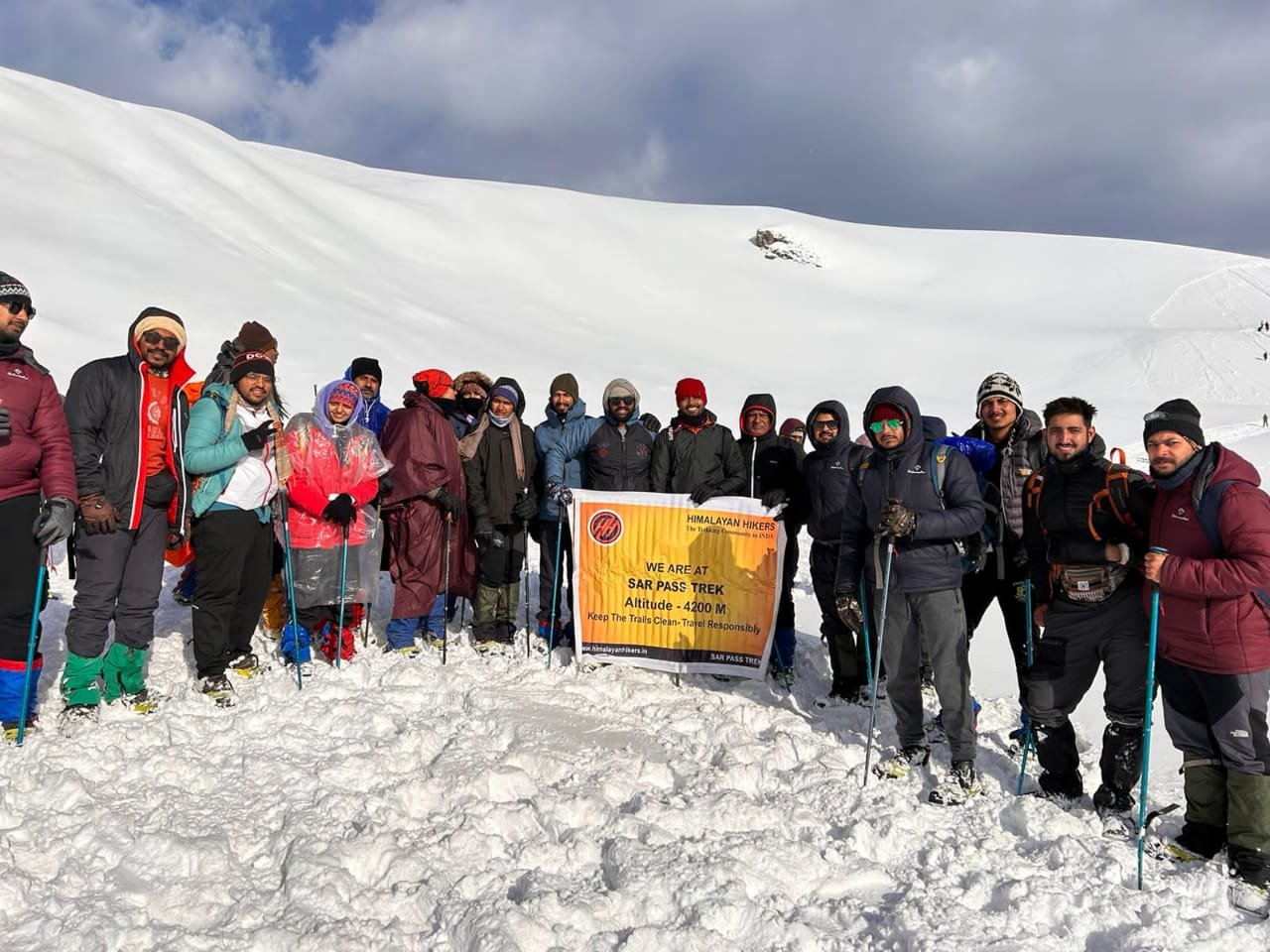
Is Sar Pass trek safe?
Set amidst the high-altitude ranges, concerns regarding Sar Pass trek safety are indeed very valid questions. We have all the possible probabilities calculated if anything goes off the schedule.
At every stop point of the journey, trekkers will be going through a properly guided session informing them about the upcoming terrains. All our professionals strive their best to provide trekkers with the best experience possible.
Sar Pass Trek: Best High-Altitude Trek for Beginners in the Himalayas
One can experience all kinds of trails and go through old-fashioned Himalayan villages, wide and narrow meadows, and forests.
You get to experience terrain varieties on this trek, and its starting point is Kasol, away from cities. People from different areas visit this place and it’s a famous tourist destination.

Best Time to Visit Sar Pass Trek
The best time to undertake the Sar Pass Trek is during the summer and post-monsoon seasons, which typically fall between May and October. Here’s a breakdown of the different seasons and their characteristics:
Summer Season (May to June): This is the ideal time for the Sar Pass Trek, as the weather is pleasant, with mild temperatures during the day and cool nights. The trails are usually clear of snow, allowing for a relatively easier trek. The meadows are in full bloom, offering vibrant landscapes and picturesque views.
Monsoon Season (July to August): The monsoon season brings heavy rainfall to the region, making the trekking trails slippery and risky. It is not recommended to undertake the Sar Pass Trek during this time, as the chances of landslides and flash floods increase.
Post-Monsoon Season (September to October): After the monsoon season, the weather starts to clear up, and the landscapes become lush green again. This period is considered the shoulder season for the Sar Pass Trek. The crowds are thinner compared to the summer season, and the weather remains favorable for trekking. However, towards October, temperatures start to drop, especially during the nights, so you should be prepared for colder conditions.
Sar Pass Trek Highlights
The base camp for this trek is Kasol, which is located near the Parvati River’s banks in the Parvati valley. The trek to Sar officially begins in Kasol, a town well-known for its pretty coniferous forest and mountain streams. The trek trails through dense forests and progresses to a total snow-covered setting. The trail then further loops through pine forests, charming old-world villages, majestic snow-capped mountains, and some of the most breathtaking scenery.
Rhododendrons abound in the forest near the descent; trekkers can expect to be taken aback by the breathtaking scenery. The Nagaru campsite, which is also the highest point during the entire trek, is blessed with beautiful mountains across the Parvati valley. It arrives after the shepherd’s trail of Mung Thatch. During the trek, hikers pass through several small meadows, most of which are grazed by villagers with their livestock
Things to Look out for Sar Pass Trek
- The trek is certain to provide unrivalled feelings of accomplishment.
- Various villages with many opportunities to interact with the locals will keep you entertained throughout the journey.
- Explore the enthralling forest of rhododendrons.
- Various ascents and descents will encourage you to put your endurance to the test and eventually overcome them.
- The panoramic view of snow-covered trails and peaks from the top is well worth the effort trekkers will expend on their journey.
- Camping under the clear night sky filled with stars is an experience in and of itself.
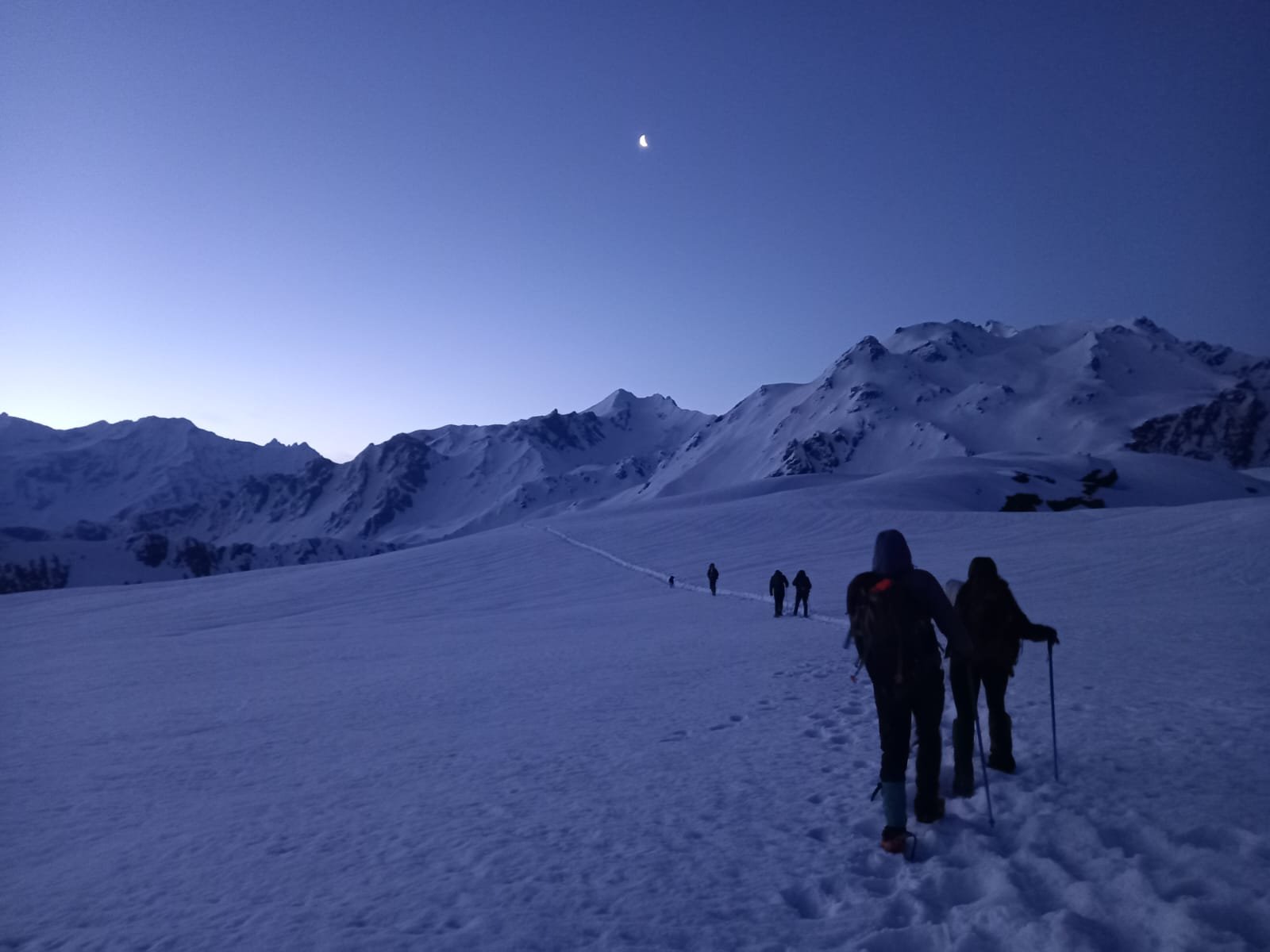
How to Reach Kasol for Sar Pass Trek?
To reach Kasol, the base village for the Sar Pass Trek, you can follow these general directions:
By Air: The nearest airport to Kasol is Bhuntar Airport, located approximately 31 kilometers away. You can take a flight to Bhuntar Airport from major cities like Delhi or Chandigarh. From the airport, you can hire a taxi or take a local bus to Kasol.
By Train: The nearest major railway station to Kasol is Pathankot Railway Station, which is well connected to major cities in India. From Pathankot, you can take a bus or hire a taxi to reach Kasol. Another option is to take a train to Chandigarh Railway Station and then continue your journey to Kasol by bus or taxi.
By Road: Kasol is well-connected by road and can be reached by bus or taxi from various cities. Here are a few common routes:
From Delhi: You can take a bus from Delhi to Bhuntar, which is the nearest major town to Kasol. From Bhuntar, you can take a local bus or hire a taxi to reach Kasol, which is approximately 30 kilometers away.
From Chandigarh: You can take a bus or hire a taxi from Chandigarh to Kasol. The distance between Chandigarh and Kasol is around 275 kilometers.
From Manali: If you are coming from Manali, you can take a local bus or hire a taxi to Kasol. The distance between Manali and Kasol is approximately 80 kilometers.
Some important points to note for Sar Pass
Please note that we don’t provide timing schedules for transportation before Manali. Subject to various conditions, the scheduled timings and availability of particular rides may differ.We recommend that trekkers reach out to our teams with any queries.You can drop an email or call us for an initial guided session.Our teams will be collecting trekkers at fixed points of airports, railway stations, and bus stands.It is recommended that unless any delay arrives, trekkers are advised to reach the destinations at least 2 hours prior.
Phone Connectivity and ATM Transactions
1) Because connectivity along the route is unpredictable, we urge people to do all of their work ahead of time.
2) Trekkers will be provided with walkie-talkies beforehand in case of emergency.
3) The last ATM transactions available will be at Kasol but we recommend travelers to collect cash beforehand or while in Manali as ATM availability at other places might not dispense cash at times.

How to get fit for the Sar Pass Trek in Himachal Kasol?
Here are some tips to help you get fit for the trek:
- Cardiovascular Fitness: Trekking involves long hours of walking and endurance. Engage in activities that improve your cardiovascular fitness, such as jogging, cycling, swimming, or brisk walking. Start with shorter distances or durations and gradually increase the intensity and duration of your workouts over time.
- Leg Strength and Endurance: Trekking requires strong leg muscles to tackle uphill and downhill sections. Incorporate exercises like squats, lunges, step-ups, and calf raises into your fitness routine. Include both strength training and endurance-building exercises for your legs.
- Core Strength: A strong core is essential for maintaining balance and stability during the trek. Include exercises like planks, Russian twists, mountain climbers, and sit-ups to strengthen your core muscles.
- Stair Climbing: Find a nearby staircase or use a stair-climbing machine at the gym to simulate the uphill and downhill sections of the trek. Regular stair climbing workouts will help build strength and endurance in your legs.
- Backpack Training: As you will be carrying a backpack during the trek, gradually increase the weight of your backpack during your training sessions. Start with a lighter load and gradually add weight to simulate the weight you’ll carry during the trek.
- Flexibility and Stretching: Engage in regular stretching exercises to improve flexibility and prevent muscle stiffness. Focus on stretching your leg muscles, lower back, shoulders, and neck.
- Mental Preparation: Trekking requires mental resilience and determination. Prepare yourself mentally by setting realistic goals, visualizing the trek, and staying positive. Practice mindfulness and relaxation techniques to manage stress and keep a calm mindset during challenging moments.
- Hydration and Nutrition: Stay hydrated throughout your training period and during the trek. Maintain a balanced diet rich in carbohydrates, proteins, and essential nutrients to fuel your body and aid in recovery.

Himalayan Hikers – Provided food during the Sar Pass Trek
We serve five -05 times meals a day including- Breakfast, Lunch, Evening Snakes, Soup, Dinner, A variety of delectable and healthy food is provided which includes; Indian, Chinese and other Western meals. They are nutritious and keep you fit and healthy on the trek.
The type of food provided during a trek can vary depending on factors like the location, duration, and the trekking company or organization you’re with.

However, there are some common types of food that are often included in trekking provisions:
- Carbohydrates: Foods high in carbohydrates provide energy for the trek. This includes items like rice, pasta, bread, and potatoes. More
- Proteins: Protein-rich foods help with muscle repair and recovery. Common protein sources include lentils, beans, tofu, meat (if available), eggs, and dairy products.
- Fruits and vegetables: These provide essential vitamins, minerals, and fiber. While fresh produce may not always be available, dried fruits and vegetables or canned options might be included.
- Snacks: Trekking often involves long hours of physical exertion, so snacks are important for quick energy boosts. Snacks like nuts, energy bars, trail mix, and chocolate are common choices.
- Local cuisine: Depending on the region you’re trekking in, you might also get the chance to sample local dishes. This can be a delightful way to experience the culture and flavors of the area.







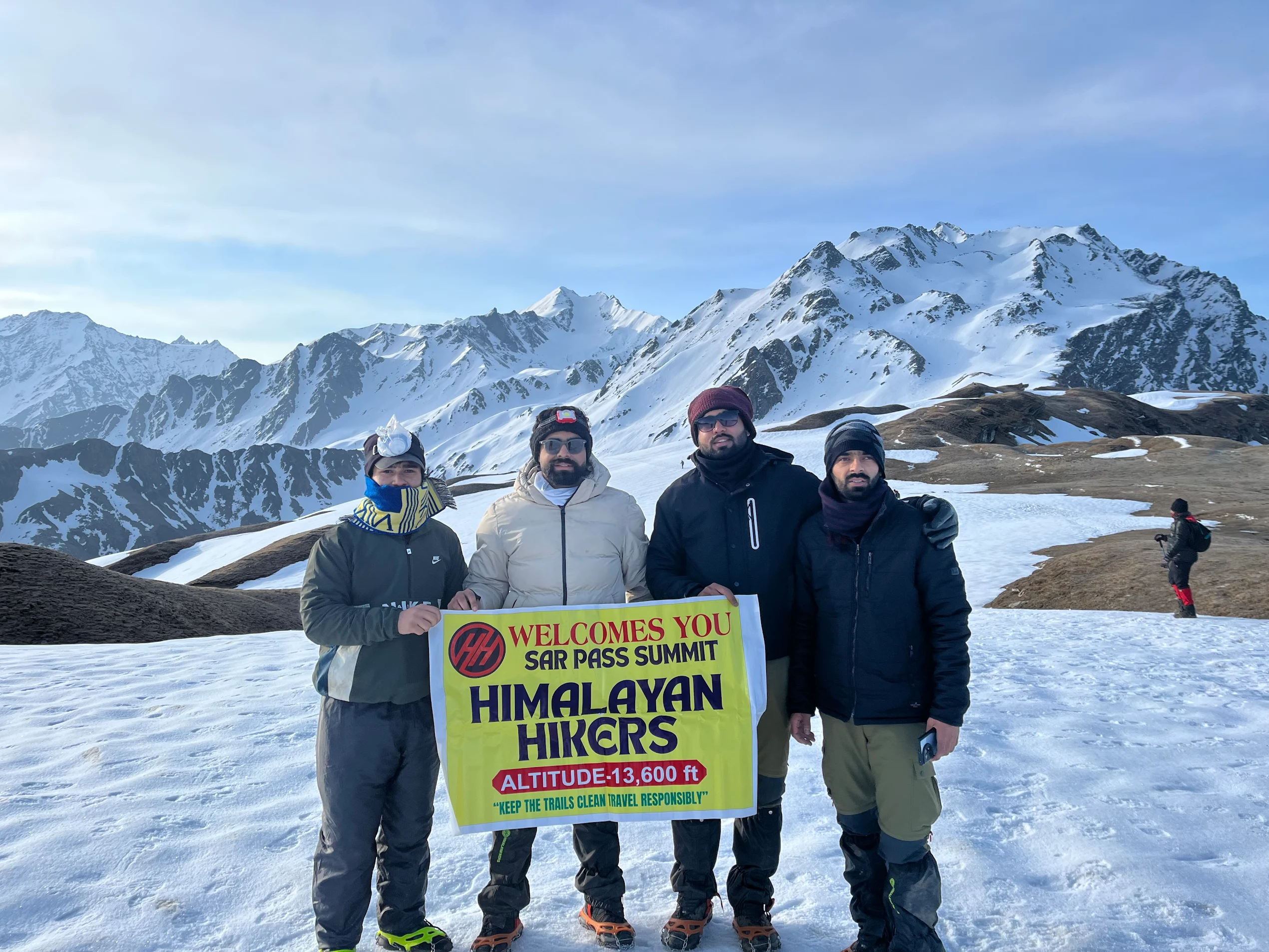







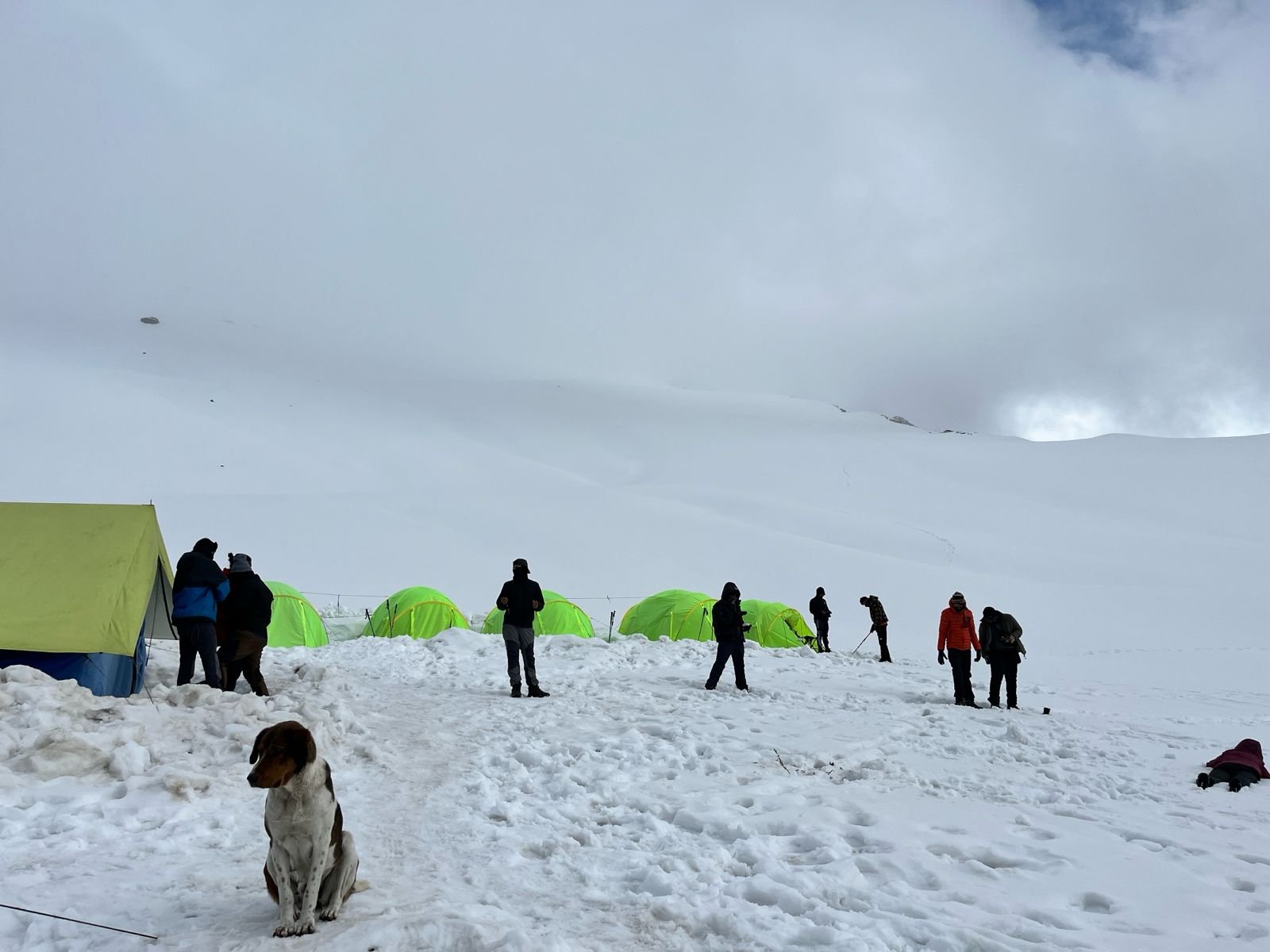

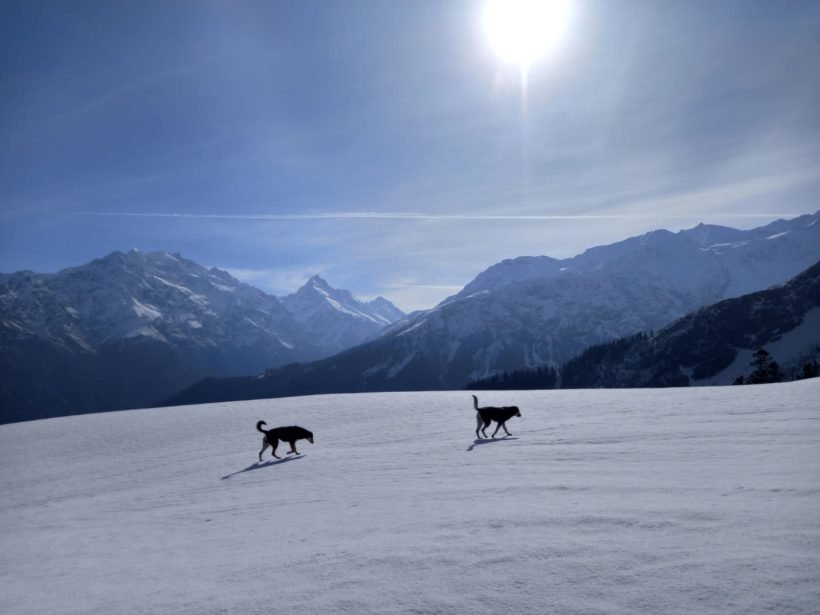











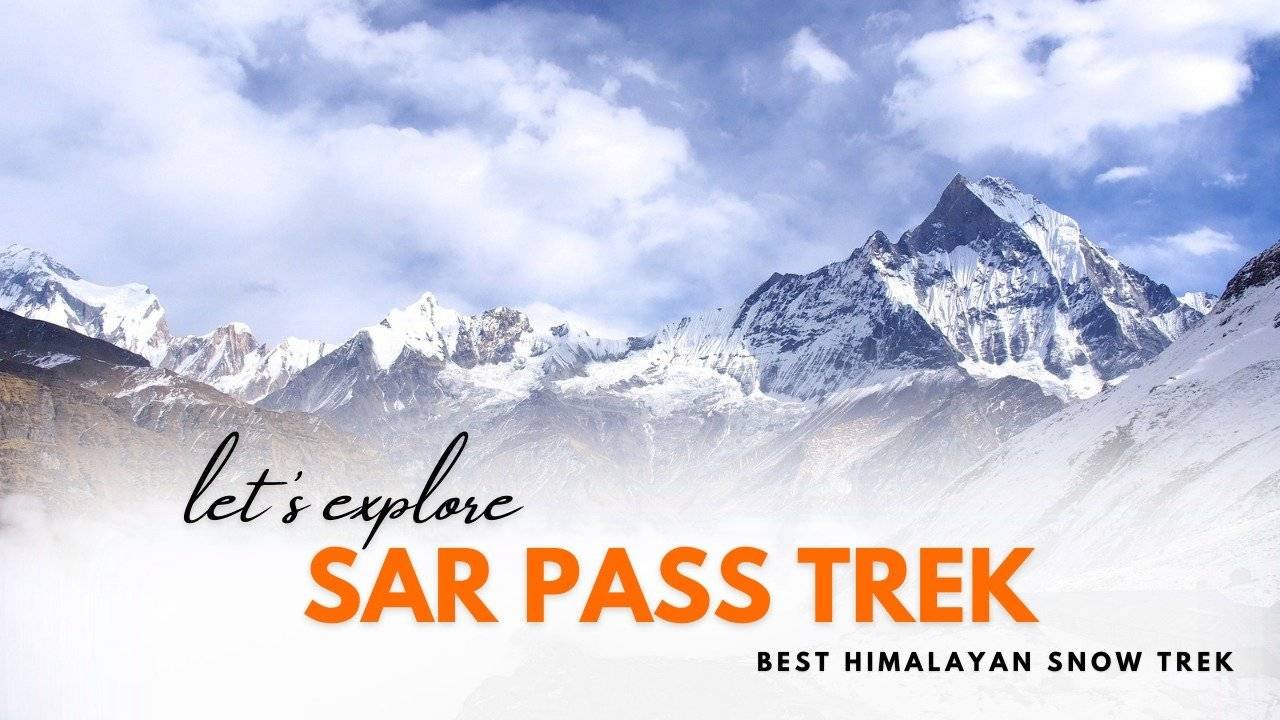









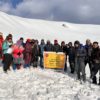
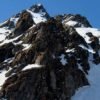









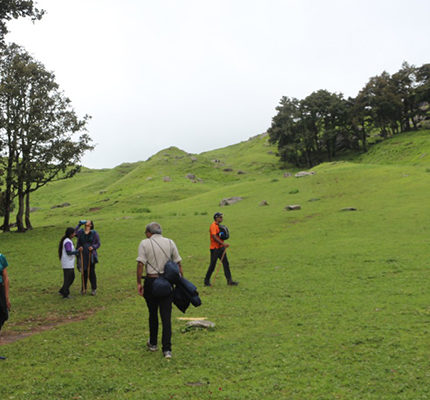

Debangshu Mallick –
⭐⭐⭐⭐⭐ 5-Star Review for Himalayan Hikers
I recently completed a trek with Himalayan Hikers on 28th June 2025, and I couldn’t be more satisfied. From start to finish, the experience was incredible and well-organized. The team was disciplined, supportive, and truly passionate about the mountains.
I deeply appreciated their strict adherence to rules and discipline, which is exactly what you need when trekking in high-altitude regions. Safety and structure were clearly their priorities, which gave me a lot of confidence as a trekker. What stood out the most was the way the guides constantly reminded us to keep the mountains clean. Their commitment to responsible trekking and eco-friendly practices is something I really admire. The team of experienced guides not only knew the terrain but also had heart and compassion..
If you’re planning a trek in the Himalayas, I highly recommend Himalayan Hikers. You’ll find professionalism, warmth, and purpose in everything they do.
Roshan Ugade –
Hello everyone, We started the SAP PASS treek on 5th of Jun from Kasol via Himalayan hikers.The treek is moderatly difficult however the guide ( Maninder Singh ) and expert ( Ram) kept us motivating throught out the treek and helped us pass various difficiult terrain on our way to Sar Pass.Day 1 started from Kasol and ended in Grahan where we called our day with tasty Pakoda and Tea and tasty dinner.The temperature dipped at night but our josh was high and started from Grahan to Nagaru on Day 2.The brief by Guide ( Maninder ) everyday before we go to our tent was very helpfull partially making us ready for next day.(Keep drinking water was the slogan we all followed).Slight snow was present at Nagaro and at night the tempeature dipped below 0C however the tents were warm enough to make us fall asleep.From Nagaru we reached Biskeri via SAR PASS crossig the final submit.The view was breath taking, I have not seen such a beautifull sunrise in my entire life.The peaks were covered with snow and as we started descending the submit there was snow all around.We skated on the snow and had a lot of fun.On the last day we further descended to Pulga from where we were taken to Kasol on a vehicle.The entire experiemce wiht Himalayan Hikers was excellent with Food served on all days was very tasty ( specially gulabjamun , Maggi and chai).I highly reccemend HImalayan Hikers for such treeks.
Adarsh kumar –
nyce
Pradip Das –
Had an amazing experience on the Sar Pass trek with this group! The trek went very smoothly, with great coordination and energy throughout. The stunning views, snow-covered trails, and shared moments made it truly unforgettable. Grateful for such a wonderful journey with such a fantastic team and trek leader Manish Rawat/Ashish Rawat.
Parth Samariya (verified owner) –
Sar Pass experience was enjoyable with Himalayan Hikers. All services provided were really good. Trek Leader Manish Rawat was very supportive & calm.
Parth Samariya (verified owner) –
Sar Pass with Himalayan Hikers was a great experience. A beautiful trek with scenic views. Everyone should go for Sar Pass Trek with Himalayan Hikers as team has good trek leaders.
Laltu –
Completed Sar pass trek successfully with Himalayan Hikes. The food at all the base camps was good and tasty. The trek guides Mr. Biru and Asish are well trained and experienced. They supported all the trekkers and they were concerned about everyone’s safety and comfort. Behavior of all the Staffs of all the base camps are good.
Laltu –
We have completed the Sar pass trek successfully with Himalayan Hikes. The food provided at all the base camps, was excellent. The trek guides, Mr. Biru and Asish are very supportive and well trained. They were concerned about everyone’s safety and comfort.
Laltu –
We have completed the Sar pass trek successfully with Himalayan Hikes. The food provided at all the base camps, was excellent. The trek guides, Mr. Biru and Asish are very supportive and well trained. They were concerned about everyone’s safety and comfort.
Pawan Choudhary –
Me and my friends recently completed the Sar Pass Trek with Himalayan Hikers, and it was an unforgettable experience. Our guides, Viru Bhai and Aashish Bhai, were outstanding – their expertise, support, and encouragement made the trek truly memorable while ensuring everyone’s safety.
The Himalayan Hikers team provided excellent arrangements, including delicious food and comfortable stays at all campsites. Their attention to detail and commitment to quality made the trek even more enjoyable.Highly recommend Himalayan Hikers for their professionalism and attention to detail.
Archit Soni –
it’s food was good in comparison to some other trekking companies. Our guides Star and Rohit was friendly as well.
Ankur P Rathi –
First time trekking the Himalayas. I had gone for SarPass trek with Himalayan Hikers. Our tour guides Sonu Rawat and Jogi Sir were simply awesome. They explained us smallest of the things in great details, gave us tricks and tips for hiking. Took care of each one of us as a family and made sure we returned safely back. At some extremely difficult parts of trek they literally held our hands and made sure we completed the trek. I highly recommend SarPass trek with HH because of our trek leader Sonu Sir. The food was great everyday. We were served heavy breakfast, lunch was to-go in lunch boxes, evening snacks (including tea), soup and. dinner were provided at campsites. Overall SarPass Trek with HH was a memorable trip to remember.
Ankur P Rathi –
I went for Sar Pass trek with HH and it was simply amazing. Our Tour Leader Mr Sonu Rawat and Team Guide Mr Joginder were really great. This was my first trek and they both guided us really well with the smallest of details. At some of the toughest summits they literally held our hands and walked us through making sure we were safe during the Trek. The food at all the camp sites was amazing and timely provided. The kitchen staff was always ready to help. I would highly recommend HH because of there amazing team.
Aliakbar sujalpurwala –
I recently completed the Sar Pass trek with Himalayan Hikers, and it was an incredible experience. The guides were knowledgeable, friendly, and ensured our safety at every step. The trek’s route was breathtaking, featuring diverse landscapes from lush forests to snow-covered paths. Each campsite offered stunning views and comfortable accommodations, with delicious meals that were a welcome treat. The camaraderie fostered by the team made the adventure even more memorable. I highly recommend Himalayan Hikers for a well-organized and profoundly rewarding Himalayan trek
Divyansh Shah –
I recently completed the Sar Pass trek with Himalaya Hikers, guided by the amazing Sonu Sir. From start to finish, the trek was incredibly well-organized. Sonu Sir’s expertise and passion for the mountains made the journey exceptional.
Each day brought stunning landscapes, from dense forests to snow-covered passes. Reaching the Sar Pass summit was a triumphant moment, thanks to Sonu Sir’s encouragement and leadership.
The campsites were well-chosen, the food was delicious, and the overall logistics were top-notch. I highly recommend the Sar Pass trek with Sonu Sir and Himalaya Hikers for an unforgettable adventure. Thank you, Sonu Sir, for an amazing experience!
Kabeer –
Great execution, Jogi bhai best
Abhishek Yede –
one of the best organisation for such type of hiking in kasol. Provide good food during Trek also have proper equipment for Ice trecking and mountain trecking.
SNEHENDU MONDAL –
The Sar Pass trek with Himalayan Hikers was a great experience.@ sonu Ji and @yogi Ji,and @starboy(hritwik rosan) our guides, ensured safety and support throughout the journey. The trek offered breathtaking views of the Himalayas, fostering a sense of connection with nature. As a trekker, I felt encouraged, with the guides providing a supportive environment. All the facilities were good. The camaraderie among fellow trekkers added to the enriching experience. Overall, the Sar Pass trek with Himalayan Hikers was a memorable adventure.
Siddharth Babel –
A very good trek and a really good experience. The guides were the best , very helpful, staff was also good, Food was great as well And the veiw was outstanding as well. A must experience as this really pushed myself to my limits and helped me grow as a person. Great trek indeed!
Surya Pratap Singh –
The Sar Pass Trek was a breathtaking adventure and was my first high altitude experience. The trek leaders Sonu, Jogi and Starboy were exceptional, providing not just guidance but also invaluable support and encouragement throughout the journey. Their knowledge of the terrain and ability to handle unexpected situations made the trek feel safe and well-organized. Highly recommended.
Ashish Gaharwar –
Trek was superb and serene. Sonu, Jogi and Starboy were highly experienced and skilled for the Trek. Recommended.
Rushikesh Gume –
A must visit trek..
The food was great, guides very amazing, overall great experience!!
Abhijit Gupta –
We are 10 friends group successfully completed sar pass trek 12 april to 16 april -2024 Great —experienced, with team Himalayan Hikers , food, our guide, camping all best
Mayuri Deshpande –
The Trek experience was thrilling and this is a difficult Trek for beginners in the month of April. Wait for the snow to get cleared by May or the beginners can also avoid this Trek.
About Himalayan Hikers, the team was very supportive and made our Trek memorable.
Aditya Madan –
Sar Paas was my second trek with Himalyan Hikers. These 5 days were filled with amazing experiences and unreal scenic beauty. I was literally in the lap of nature. My guide Shiva was super helpful throughout the trek which had snowfall and rainfall almost all days. It was really an awesome experience which enriched my perspective on life. Thanks HH team and Shiva Bhai.
Sanjit kumar Singh –
Himalayan Hikers best team made our Sar Pass Trek memorable ! thanks kuldeep sir —our guide cooking team, all camp to good all experienced, humble, . Highly recommend Team Himalayan Hikers !” our next trek Kashmir great lakes paka with your same team
Poulomi Saha –
The Sar Pass trek with Himalayan Hikers was a great experience. Shiva Ji and Sonu Ji, our guides, ensured safety and support throughout the journey. The trek offered breathtaking views of the Himalayas, fostering a sense of connection with nature. As a woman trekker, I felt encouraged, with the guides providing a supportive environment. All the facilities were good. The camaraderie among fellow trekkers added to the enriching experience. Overall, the Sar Pass trek with Himalayan Hikers was a memorable adventure.
Kuldeep sharma –
Himalayan Hikers made our Sar Pass Trek unforgettable! Shiva ji and Sonu Ji were exceptional guides—experienced, humble, and generous. Their fun-loving nature added joy to every step. Highly recommend Himalayan Hikers for an adventure of a lifetime!”